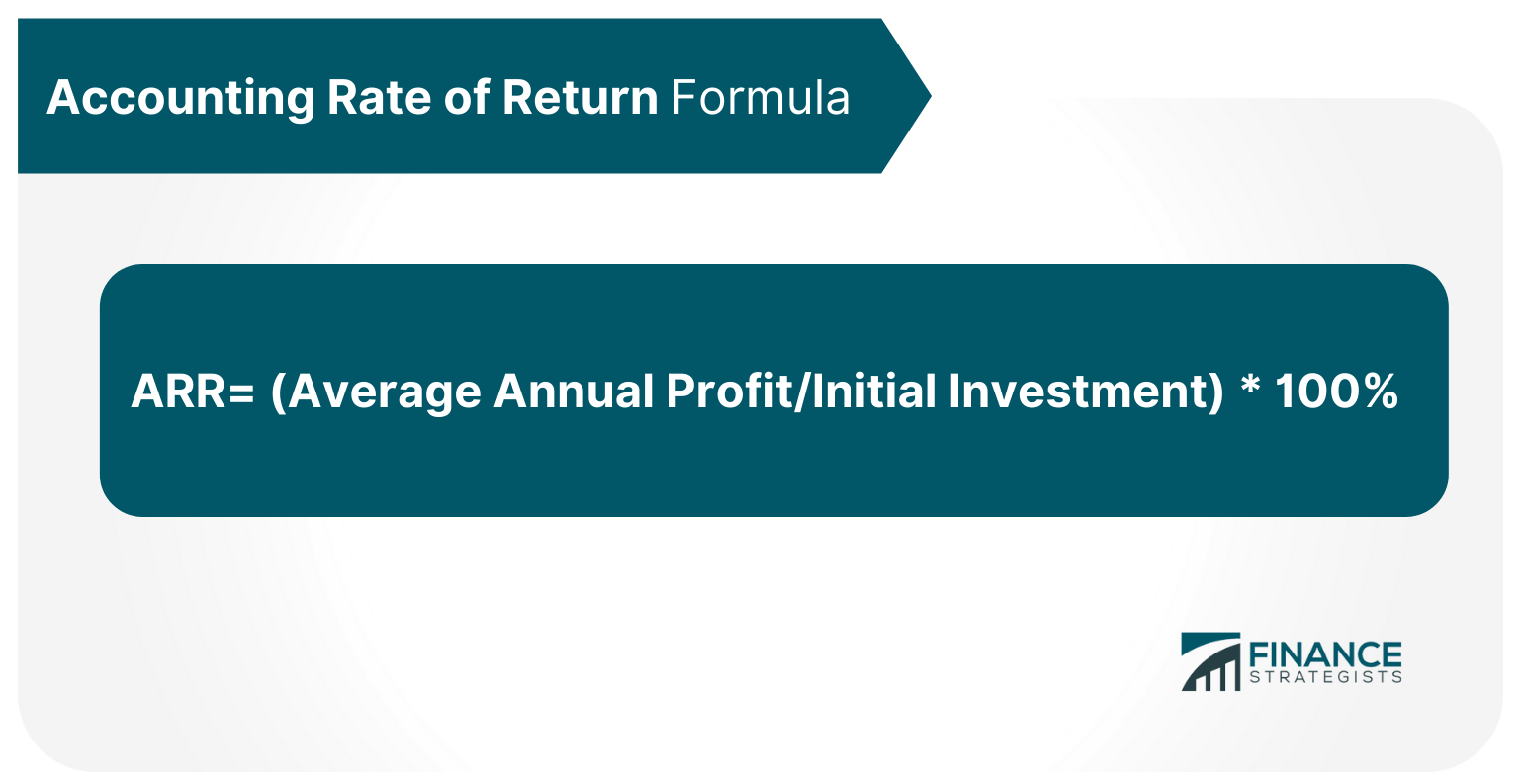The accounting rate of return (ARR) is an indicator of the performance or profitability of an investment. It is also known as ARR or accounting profit rate of return. Accounting Rate of Return Formula; ARR = (Net Income / Average Investment) * 100% Accounting Rate of Return is calculated by taking the beginning book value and ending book value and dividing it by the beginning book value. The Accounting Rate of Return is also sometimes referred to as the "Internal Rate of Return" (IRR). For example, you invest 1,000 dollars for a big company and 20 days later you get 300 dollars as revenue. The accounting rate of return is one of the most common tools used to determine an investment's profitability. Accounting rates are used in tons of different locations, from analyzing investments to determining the profitability of different investments. This is a solid tool for evaluating financial performance and it can be applied across multiple industries and businesses that take on projects with varying degrees of risk. The following are the reasons why a company uses ARR. There are some limitations when using Accounting Rates of Return, which include: Accounting Rates of Return are one of the most common tools used to determine an investment's profitability. It can be used in many industries and businesses, including non-profits and governmental agencies. It offers a solid way of measuring financial performance for different projects and investments. How to Calculate Accounting Rate of Return?
Accounting Rate of Return Formula

Why Use the Accounting Rate of Return?
Limitations of Accounting Rate of Return
The Bottom Line
Accounting Rate of Return FAQs
The Accounting Rate of Return is the overall return on investment for an asset over a certain time period.
To calculate ARR, you take the net income, then divide by initial investment.
Accounting Rate of Return helps companies see how well a project is going in terms of profitability while taking into account returns on investments over a certain period.
Some limitations include the Accounting Rate of Returns not taking into account dividends or other sources of finance.
The Accounting Rate of Return can be used to measure how well a project or investment does in terms of book profit.
True Tamplin is a published author, public speaker, CEO of UpDigital, and founder of Finance Strategists.
True is a Certified Educator in Personal Finance (CEPF®), author of The Handy Financial Ratios Guide, a member of the Society for Advancing Business Editing and Writing, contributes to his financial education site, Finance Strategists, and has spoken to various financial communities such as the CFA Institute, as well as university students like his Alma mater, Biola University, where he received a bachelor of science in business and data analytics.
To learn more about True, visit his personal website or view his author profiles on Amazon, Nasdaq and Forbes.















